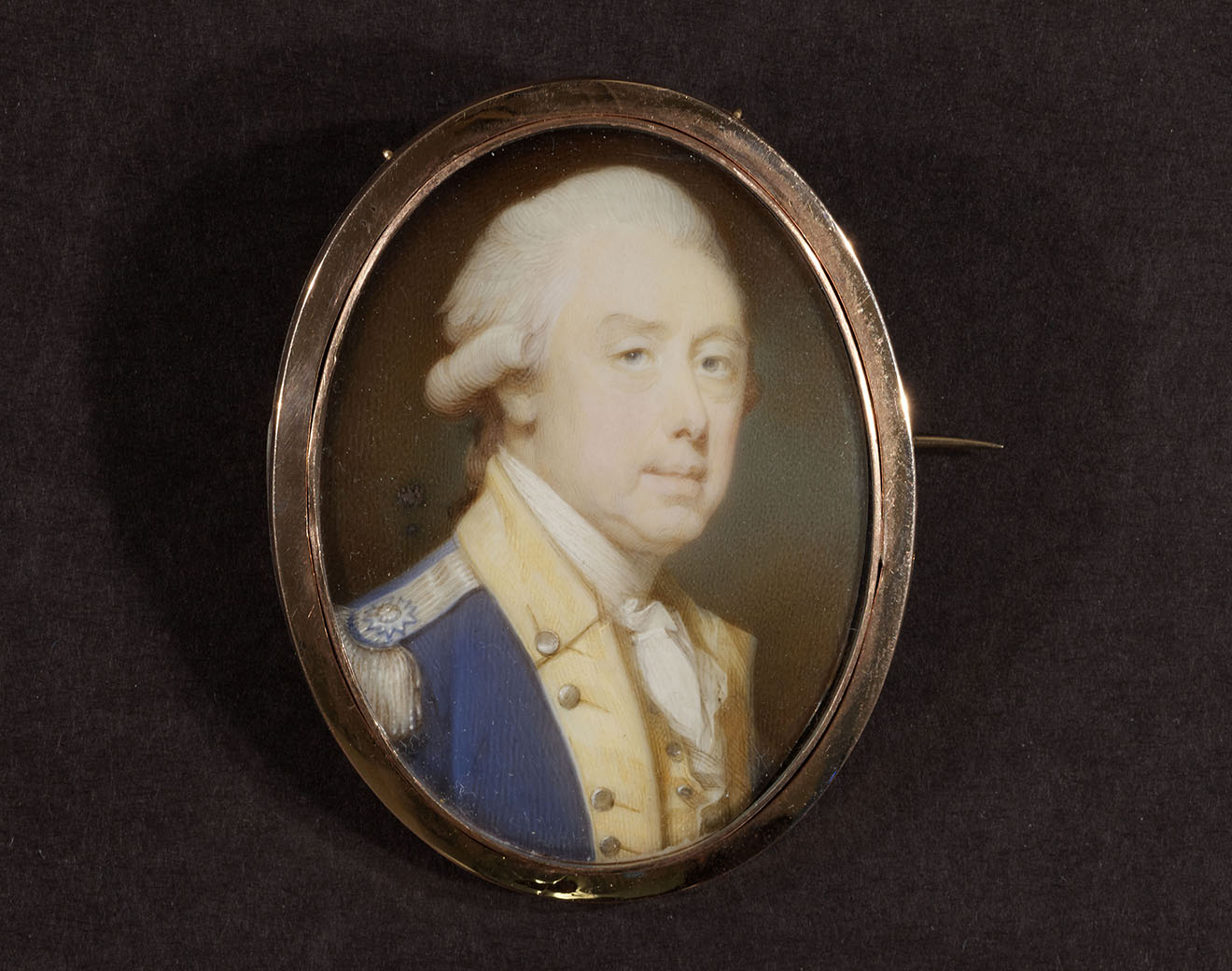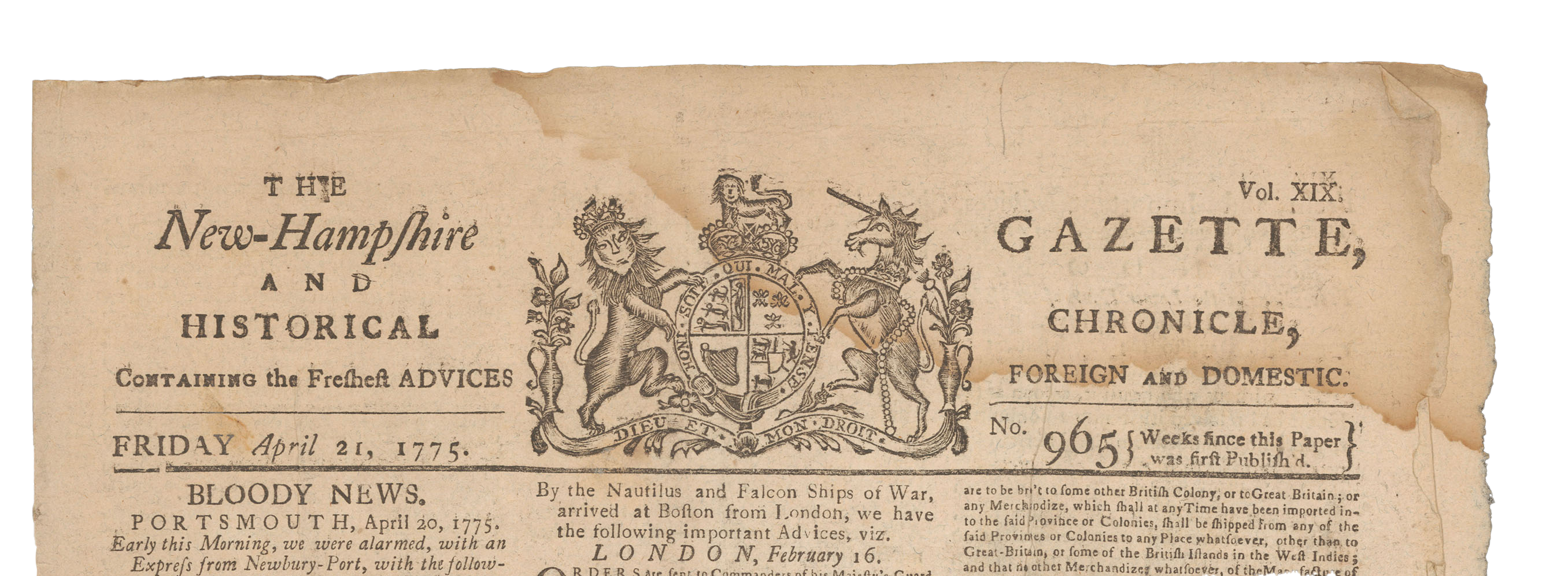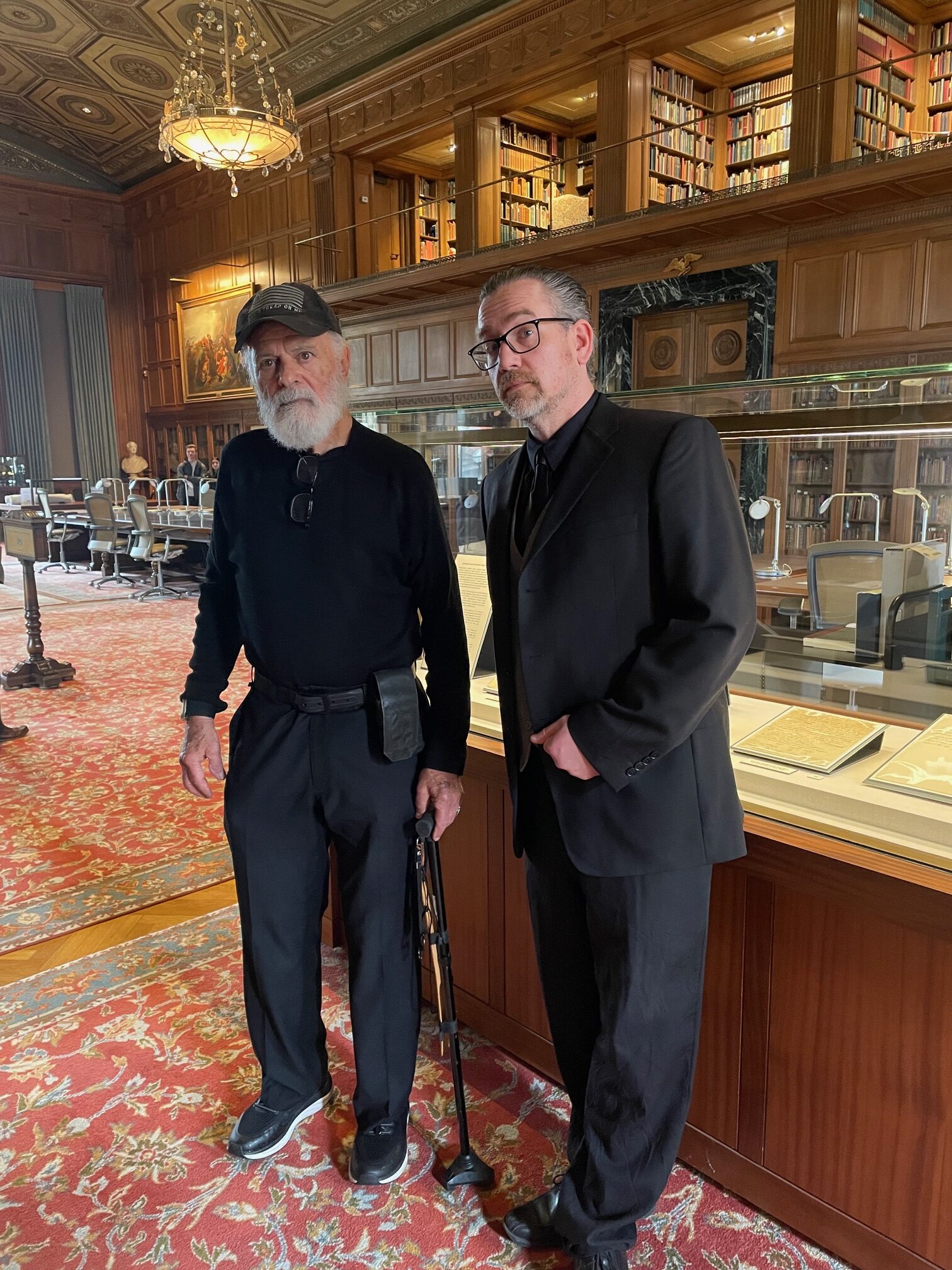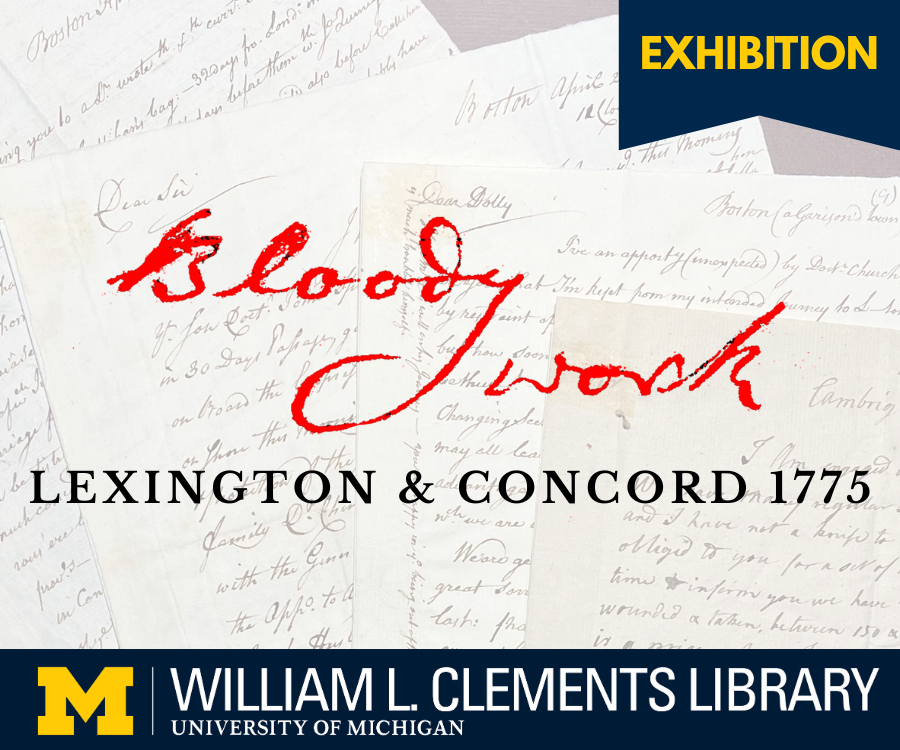The William L. Clements Library’s new exhibition, Bloody Work: Lexington and Concord 1775 features historic handwritten letters, documents, and artwork. Opening on April 18, 2025, it commemorates the 250th anniversary of the military hostilities that began the Revolutionary War. The Clements is uniquely positioned to tell this story, as it has some of the strongest Revolutionary War holdings of any library, particularly those pertaining to the British side of the war.
On display is the manuscript that sparked the war itself. British General Thomas Gage drafted orders to Lt. Colonel Francis Smith on April 18, 1775, to march a corps of grenadiers and light infantry “with the utmost Expedition and secrecy to Concord, where you will seize and destroy all the artillery and ammunition Provisions Tents & all other military stores you can find…,” setting up the first battles of the war.
Curator of Manuscripts Cheney J. Schopieray articulates the impact of the Thomas Gage Papers historically. “When you think of the flashpoints leading up to the American Revolution and independence—it’s all here,” he said. “There are materials on British-Native American relations, responses to the 1765 Stamp Act and nonimportation agreements, eyewitness accounts of the Boston Massacre, …and an abundance of military and administrative activities.”
The Gage Papers, which are so crucial to Bloody Work, are also necessary for understanding the British perspective of the Revolutionary War. Associate Dean for the Humanities at LSA and Professor of American Culture and History Gregory Dowd underscores their importance, stating, “For the history of North America and the Atlantic World in the Revolutionary era, the Thomas Gage Papers are essential. As an intelligent, energetic, and tragic commander of British forces, Gage, standing over his desks in New York and Boston, unfolded and poured over the extensive media of letters and maps sent by his correspondents as they revealed to him, and still reveal to us, life across much of the North American continent and the West Indies. As a critical decision-maker, his own letters demand equal attention.”
Thomas Gage, oval miniature portrait painted by artist Jeremiah Meyer (1735-1789) on ivory, rose gold rim, pin back, necklace chain holes, cobalt blue backing, ca. 1785–1787. Thomas Gage wears the uniform of the 11th Light Dragoons, the regimental coat indicating his colonelcy (held between 1785 and his death in 1787). Gift of Benjamin and Bonnie Upton, and Margaret Trumbull. University of Michigan William L. Clements Library.
Selection of Patriot Letters turned over to British General Thomas Gage by Dr. Benjamin Church between April 22 and late April 1775. Dr. Church was a trusted friend to the likes of Rachel Revere, but was in fact, a British spy. William L. Clements Library.
An aspect of the Library’s mission is to preserve and make available primary source information, and digitizing popular collections makes them more widely available for research. In pursuance of this goal, the Clements secured a National Endowment for the Humanities grant in 2021 to digitize the Gage Papers. Former digitization technician Tulin Babbitt spent two years working with the Gage Papers and underscores the importance of making such important papers available online. “The digitization of the Thomas Gage Papers allows anyone from around the world to view this incredibly historic collection. For the first time, the history written in these documents will no longer be accessible solely to those able to travel to the Clements Library.”
Dowd also describes the importance of the Gage Papers to researchers, “Historians have exhumed evidence from this vast collection to inform everything from military and political history to Native American history and gender analysis. Perhaps the most widely consulted collection in the Clements Library, it never tires out.”
Pulitzer Prize-winning and bestselling author Rick Atkinson has researched at the Clements Library, making use of the vast holdings of Revolutionary War materials. His first book in the Revolution Trilogy, The British are Coming: The War for America, Lexington to Princeton, 1775-1777, tells the story of the first twenty-one months of the long war for American Independence. The second book, The Fate of the Day: The War for America, Fort Ticonderoga to Charleston, 1777-1780, is due later this month. On May 13, the public is invited to a program with Atkinson in discussion with Paul Erickson, the Randolph G. Adams Director of the Clements Library.
While the Gage Papers are featured prominently within Bloody Work, the exhibit also utilizes the Lexington and Concord collection and Schoff Revolutionary War collection, among others. Newspapers and printed materials spread both news and misinformation.
Newspapers like the New Hampshire Gazette and Historical Chronicle reported on the hostilities. On April 21, 1775, stories of the violence were headlined “BLOODY NEWS.” William L. Clements Library.
The title of the exhibit comes from a letter loaned by Dr. Gary Milan in which Deacon Jonathan Hosmer writes, ”…as for News we Daily Expect a Tumult there Came up a post to Concord a Saturday Night which Informs them that the Regulars are Coming up to Concord the Next Day and if they Come I Believe there will be Bloody work…” Letters from John Hancock attempting to get belongings left during the evacuation of Boston, are also provided by Milan as well as a first-hand account from a soldier detailing his experience fighting in the British Army during the Battles of Lexington and Concord.
Excerpt from a letter written on April 10, 1775 by Deacon Jonathan Hosmer of Acton to his daughter and/or son-in-law, stating that daily they expected a tumult, referencing the false alarm by Revere, and adding his belief that if Regular soldiers did come out to Concord “there will be bloody work.” From the collection of Dr. Gary Milan, loaned in memory of Joyce Kliger.
Bloody Work: Lexington and Concord 1775 explores the early months of 1775 in Massachusetts, the battles of April 19, and their immediate aftermath, giving an account of the events that ignited a nearly eight-year Revolutionary War between the British Empire and its American colonies. The exhibition can be viewed at the Clements Library on weekdays from 12-4 pm through September 19, 2025.


![15. BloodyWork Case4_Item1_Cluster Selection of Letters Turned Over to Thomas Gage by Dr. Benjamin Church, April 22 and late April 1775; Boston and Cambridge, [Province of Massachusetts Bay]. Manuscript Letters](https://clements.umich.edu/wp-content/uploads/2025/04/15.-BloodyWork-Case4_Item1_Cluster-scaled-e1744388617785.jpg)

![6.1 gm loan-jon hosmer letter april 10, 1775-pp.1 Page 1 and Signatory Page of Jonathan Hosmer autograph letter signed to [Oliver and/or Sarah Hosmer Stevens], April 10, 1775; Acton, [Province of Massachusetts Bay]. Manuscript Letter.](https://clements.umich.edu/wp-content/uploads/2025/04/6.1-gm-loan-jon-hosmer-letter-april-10-1775-pp.1.jpg)

